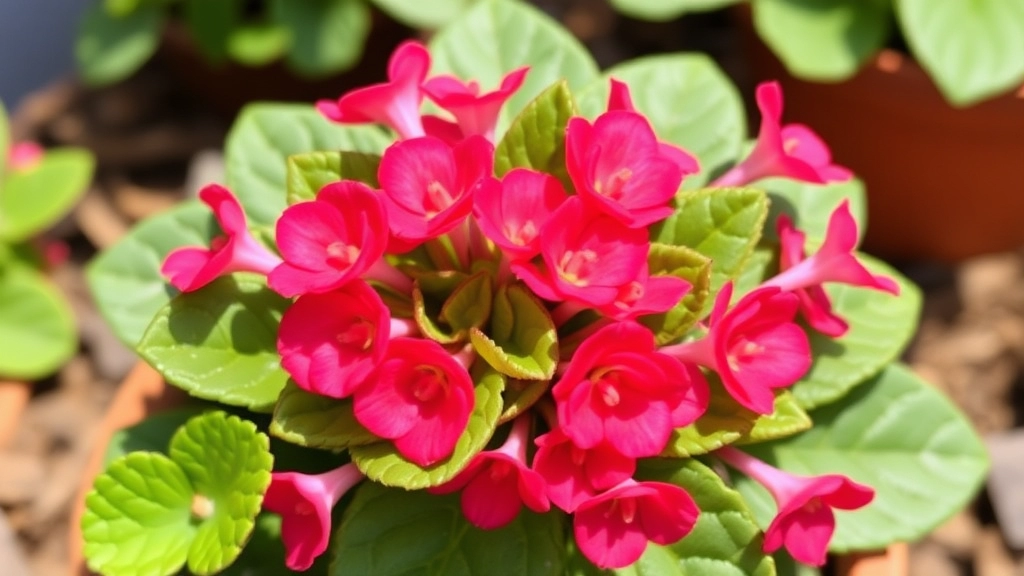The Velvet Leaf Kalanchoe
The Velvet Leaf Kalanchoe, also known as Kalanchoe Beharensis, is a standout succulent with its velvety, triangular leaves that captivate plant enthusiasts. In this article, I’ll share essential care tips to help you nurture this unique plant, covering everything from ideal growing conditions to effective propagation methods. Whether you’re a seasoned gardener or a succulent newbie, these insights will ensure your Velvet Leaf Kalanchoe thrives.
Perfect Environment
First, let’s talk about the perfect environment for your Kalanchoe Beharensis. This plant loves bright, indirect light and can tolerate some direct sunlight. It’s crucial to plant it in well-draining soil to prevent root rot. Watering needs are minimal; let the soil dry out completely between waterings. By understanding these fundamental care requirements, you’ll set a solid foundation for your Velvet Leaf Kalanchoe’s health and growth.
Unique Characteristics of Velvet Leaf Kalanchoe
When considering houseplants, many of us seek unique features that not only enhance our living spaces but also bring a touch of nature indoors. The Velvet Leaf Kalanchoe, scientifically known as Kalanchoe beharensis, stands out for several reasons.
This succulent is renowned for its distinct, velvety leaves, which are a striking grey-green colour. These fleshy, paddle-shaped leaves are not just visually appealing; they also serve a vital purpose in water retention, making the plant drought-tolerant.
Key Features:
- Leaf Texture: The soft, fuzzy texture gives it a luxurious feel, earning it the nickname “Velvet Leaf.”
- Growth Habit: It typically grows upright, reaching heights of up to 1 metre, making it an excellent focal point in any plant collection.
- Flowering: While it is primarily grown for its foliage, it can produce clusters of small, tubular flowers, usually in a yellow or orange hue, adding to its charm.
- Adaptability: This plant is highly adaptable, thriving in various environments, from sunny windowsills to more shaded areas.
For more detailed care instructions, you can refer to our guide on caring for Kalanchoe Beharensis. Additionally, if you’re interested in exploring other varieties, check out our comprehensive Kalanchoe species list.
Ideal Growing Conditions for Kalanchoe Beharensis
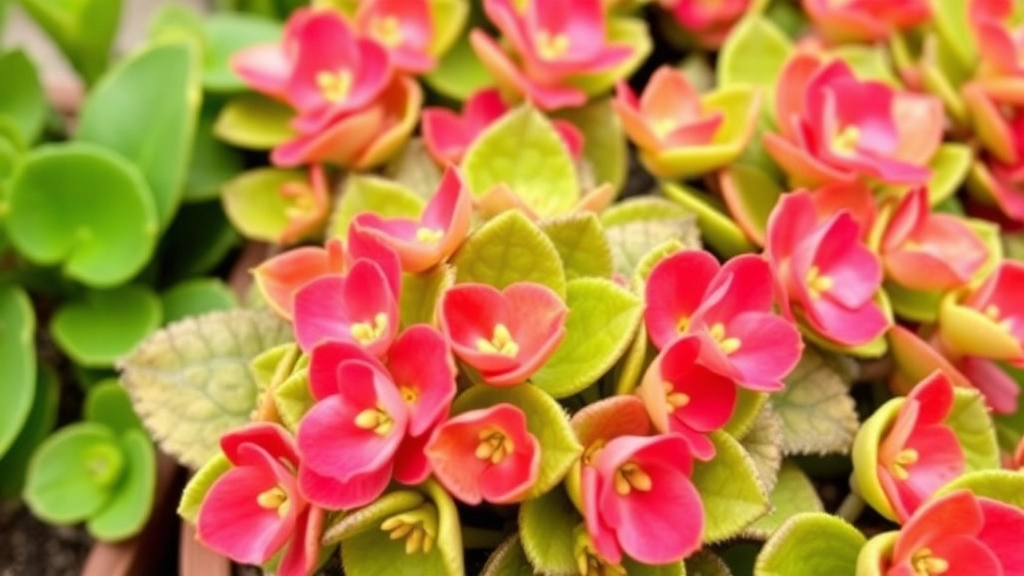
So, you’re keen on nurturing a Velvet Leaf Kalanchoe? Fantastic choice! But what are the ideal growing conditions for Kalanchoe Beharensis? Let’s dive into that.
Temperature and Humidity
Kalanchoe Beharensis loves warmth. Ideally, keep it between 20°C to 30°C (68°F to 86°F).
- Avoid cold drafts: These can stress your plant.
- Humidity: They prefer low to moderate humidity. Not a fan of dampness!
Soil Type
Choosing the right soil is crucial.
- Well-draining soil: A cactus mix or a mix designed for succulents works wonders.
- pH level: Aim for a slightly acidic to neutral range (around 6.0 to 7.0).
Location
Where you place your Kalanchoe can make a world of difference.
- Bright indirect light: They thrive in bright spots but avoid direct sunlight, which can scorch the leaves.
- Indoor or outdoor: They adapt well to both, just ensure the conditions are right.
Air Circulation
Good airflow is essential.
- Avoid overcrowding: Give your Kalanchoe room to breathe.
When it comes to successfully cultivating Velvet Leaf Kalanchoe, understanding its light and temperature needs is essential. Many plant enthusiasts often struggle with finding the right balance, which can lead to stunted growth or even plant decline.
### Light Requirements
Velvet Leaf Kalanchoe thrives in bright, indirect sunlight. Here are some key points to consider:
– **Optimal Light Exposure**: Aim for 6 to 8 hours of bright light daily.
– **Avoid Direct Sunlight**: Too much direct sunlight can scorch the leaves, leading to unsightly brown patches.
– **Indoor Placement**: A south or west-facing window is ideal for indoor growth, providing ample light without the harsh rays.
### Temperature Preferences
Temperature plays a crucial role in the health of Kalanchoe Beharensis. Here’s what to keep in mind:
– **Ideal Range**: It prefers temperatures between 15°C to 25°C (59°F to 77°F).
– **Avoid Extremes**: Protect your plant from temperatures below 10°C (50°F) to prevent stress.
– **Humidity Levels**: Kalanchoe Beharensis does well in average humidity, making it suitable for most indoor environments.
For more detailed guidance, you might find our [complete care guide for Kalanchoe Beharensis Felt Plant](https://planthq.org/complete-care-guide-for-kalanchoe-beharensis-felt-plant/) helpful. Additionally, if you’re interested in optimal conditions for other Kalanchoe varieties, consider reading our [care guide for Kalanchoe Mother of Thousands Flower](https://planthq.org/care-guide-for-kalanchoe-mother-of-thousands-flower/).
Watering and Soil Needs for Optimal Growth
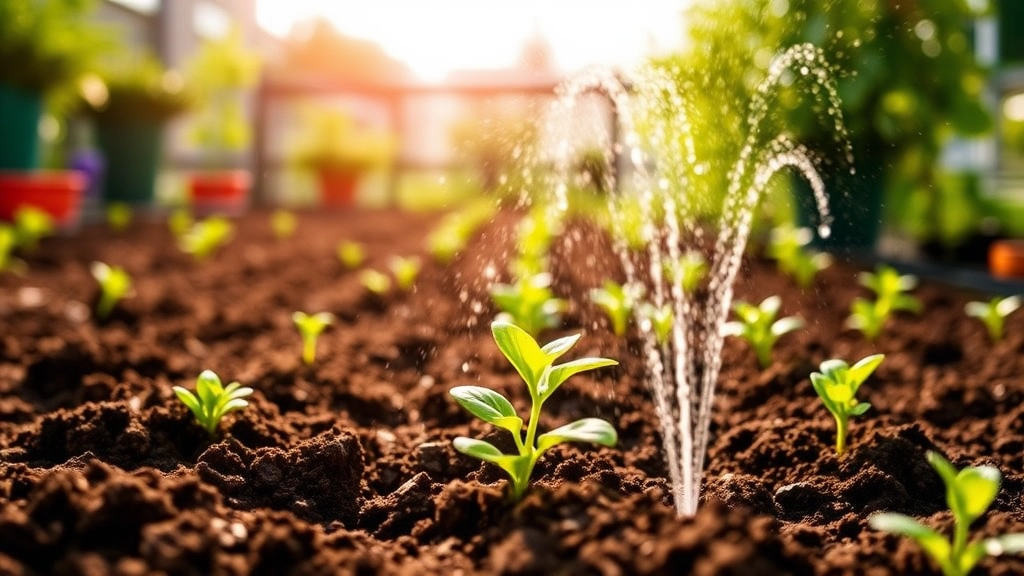
When it comes to nurturing your Velvet Leaf Kalanchoe, understanding its watering and soil requirements is crucial. Many plant enthusiasts often wonder how much water is too much or too little.
Watering Guidelines
- Frequency: Water your Kalanchoe Beharensis when the top inch of soil feels dry to the touch. This typically translates to every 2-3 weeks, depending on the season.
- Method: Ensure you water thoroughly, allowing excess water to drain out of the pot. Avoid letting the plant sit in water, as this can lead to root rot.
- Signs of Overwatering: Yellowing leaves and a mushy stem are indicators that you may be overwatering. Conversely, if the leaves are shrivelling, it’s a sign that your plant needs more moisture.
Soil Requirements
- Soil Type: A well-draining soil mix is essential. Opt for a cactus or succulent potting mix, which typically contains sand or perlite to improve drainage.
- pH Level: Aim for a slightly acidic to neutral pH (around 6.0 to 7.0). This ensures that your Kalanchoe can absorb nutrients effectively.
- Container Considerations: Ensure your pot has drainage holes. This will prevent water from accumulating at the bottom, safeguarding the health of your plant.
How to Propagate Velvet Leaf Kalanchoe
Have you ever wondered how to expand your collection of Velvet Leaf Kalanchoe? Propagation is an exciting and rewarding process that allows you to create new plants from your existing ones.
Common Pests and Diseases Affecting Kalanchoe Beharensis
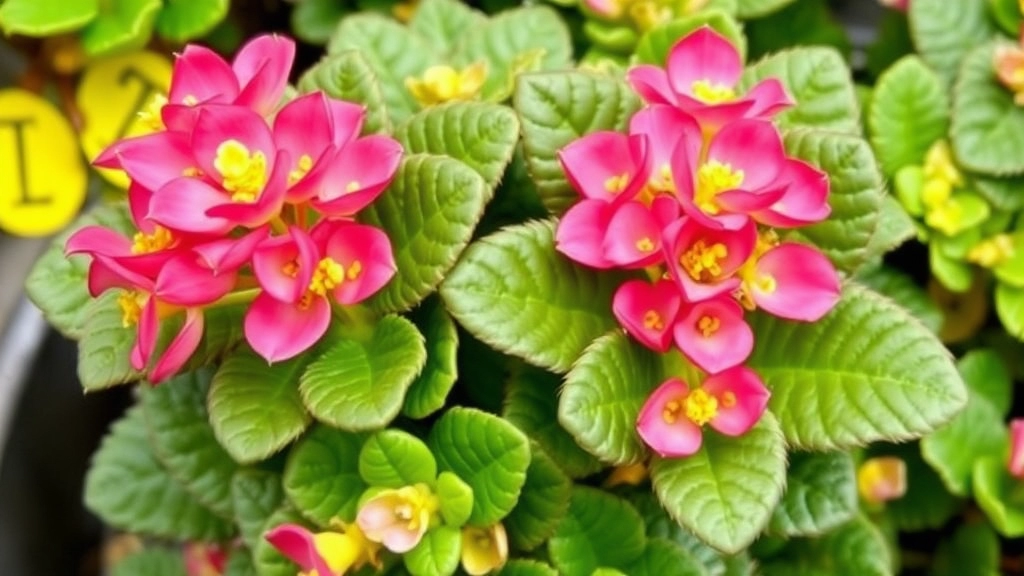
So, you’ve nurtured your Velvet Leaf Kalanchoe and it’s thriving—great job! But what if I told you that there are some pesky little critters and sneaky diseases that could threaten your plant’s health?
Common Pests
- Mealybugs: These little white fluff balls love to hide in the nooks and crannies of your plant. They suck the sap, which can weaken your Kalanchoe.
- Aphids: Tiny, green, or black bugs that can cluster on new growth. They also suck sap and can lead to stunted growth.
- Spider Mites: If you notice tiny webs, you might have these guys. They thrive in dry conditions and can cause leaf discoloration.
- Scale Insects: These appear as small, brown bumps on the leaves and stems. They can be tough to spot but can cause significant damage.
Common Diseases
- Root Rot: Overwatering is the main culprit here. If your plant’s leaves are yellowing and mushy, check the roots.
- Powdery Mildew: This looks like a white powder on the leaves. It usually happens in high humidity.
- Leaf Spot: Dark spots can appear due to fungal infections, often from water sitting on the leaves.
Prevention and Treatment
- Regular Inspections: Check your plant weekly for any signs of pests or disease.
- Proper Watering: Always let the soil dry out between waterings to prevent root rot.
- Humidity Control: Keep humidity levels in check to avoid powdery mildew.
- Neem Oil: A natural pesticide that can help with both pests and diseases. Just spray it on the affected areas.
- Remove Affected Leaves: If you spot disease, snip off the affected leaves to prevent spreading.
Fertilization and Nutrient Requirements for Kalanchoe Beharensis
As we explore the essential elements for nurturing your Velvet Leaf Kalanchoe, it’s crucial to understand how fertilization plays a vital role in its growth.
Understanding Fertilization Needs
Are you wondering how to keep your Kalanchoe Beharensis thriving? The right fertilization can make a significant difference in its health and vibrancy.
When to Fertilize
- Growing Season: Fertilize during the spring and summer when the plant is actively growing.
- Frequency: Every 4-6 weeks is ideal during this period.
Type of Fertilizer
- Balanced Fertilizer: Use a balanced, water-soluble fertilizer, such as a 10-10-10 or 20-20-20 formulation.
- Dilution: Always dilute to half-strength to prevent root burn.
Nutrient Focus
- Nitrogen: Essential for healthy leaf growth.
- Phosphorus: Promotes root development and flowering.
- Potassium: Enhances overall plant health and resistance to diseases.
Signs of Nutrient Deficiency
- Yellowing Leaves: Indicates a lack of nitrogen.
- Stunted Growth: May suggest insufficient phosphorus.
- Weak Stem Structure: Can be a sign of potassium deficiency.
Additional Tips
- Organic Options: Consider organic fertilizers like compost or fish emulsion for a gentler approach.
- Soil Testing: Conduct a soil test to determine existing nutrient levels.
- Propagation Guide: For further information on propagation, check out our Kalanchoe Beharensis Minima Care, Growth, and Propagation Guide.
- Flowering Tips: Learn how to make your Kalanchoe bloom all year round with our Kalanchoe Bloom Season Tips.
Pruning and Grooming Tips for Kalanchoe Beharensis
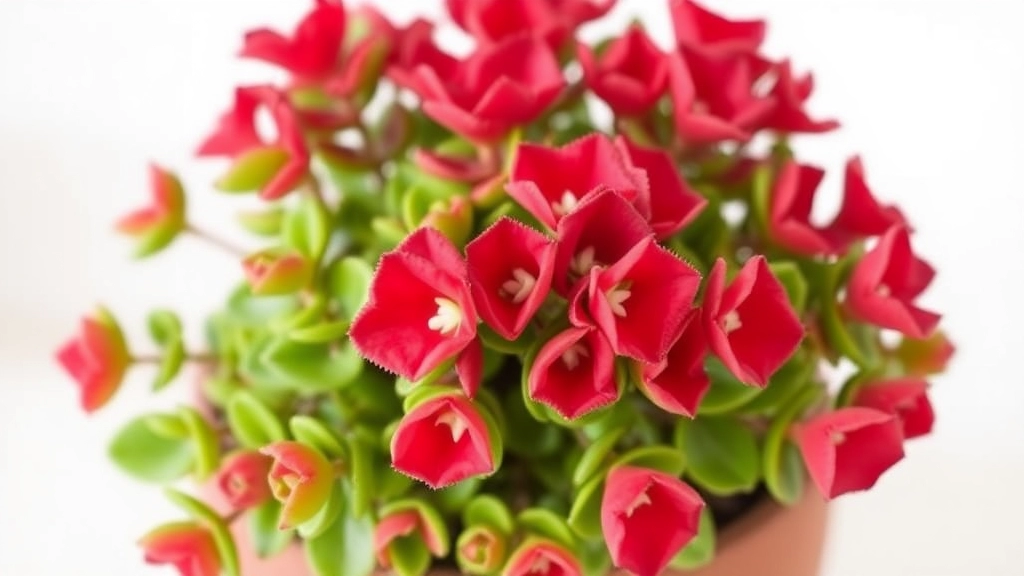
So, you’ve got your Velvet Leaf Kalanchoe thriving, and now you’re wondering how to keep it looking its best. Pruning and grooming are essential for maintaining the health and beauty of your Kalanchoe Beharensis.
Why Prune?
Pruning isn’t just about aesthetics; it helps promote healthy growth and prevents overcrowding. If you’re like me, you want your plant to flourish and show off those stunning leaves.
When to Prune:
- Spring: This is the ideal time to give your Kalanchoe a trim. It’s coming out of dormancy and ready to grow.
- After Flowering: If your plant blooms, prune it back once the flowers fade.
How to Prune:
- Cut Away Dead or Yellowing Leaves: This encourages new growth and prevents disease.
- Trim Leggy Growth: If your Kalanchoe is stretching towards the light, snip back the longer stems to promote a bushier appearance.
- Use Clean, Sharp Tools: Always use sterilised scissors or pruning shears to avoid any risk of infection.
Grooming Tips:
- Dust the Leaves: Gently wipe the leaves with a damp cloth to keep them clean and free from pests.
- Rotate Your Plant: Every few weeks, turn your Kalanchoe to ensure even light exposure. This keeps it balanced and prevents it from leaning.
Signs Your Kalanchoe Needs Attention:
- Overcrowded Growth: If it looks too dense, it’s time for a trim.
- Poor Leaf Colour: Yellowing could indicate it needs some pruning or a change in care.
Pruning and grooming your Velvet Leaf Kalanchoe can feel like a bit of a chore, but trust me, it’s worth it for that lush, vibrant look.
How to Encourage Flowering in Kalanchoe Beharensis
After ensuring your Velvet Leaf Kalanchoe is healthy and thriving, you might be wondering how to coax it into bloom. Flowering can be a delightful reward for your care, and with the right techniques, you can enhance the chances of your Kalanchoe Beharensis producing those beautiful blossoms.
Best Pots and Containers for Velvet Leaf Kalanchoe
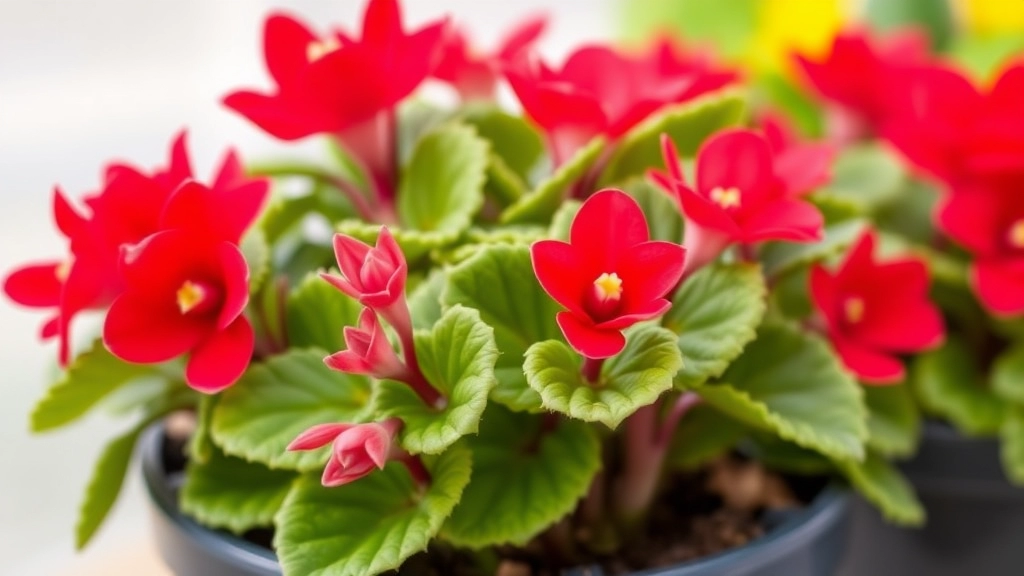
So, you’ve got your eye on a Velvet Leaf Kalanchoe, and you’re probably wondering what kind of pot will do this beauty justice. Choosing the right container is crucial for its growth and overall health.
Size Matters
First things first, size is key.
- Choose a pot that’s slightly larger than the root ball. This gives the roots room to grow without overwhelming the plant.
- Avoid pots that are too big. A massive pot can hold too much water, leading to root rot.
Drainage is Essential
Next up, drainage.
- Look for pots with drainage holes. This helps excess water escape, keeping the roots healthy.
- Consider using a terracotta pot. They’re great for letting moisture evaporate, which is perfect for Kalanchoe.
Material Choices
Now, let’s talk materials.
- Plastic pots are lightweight and retain moisture, but they can also lead to overwatering if you’re not careful.
- Ceramic pots add a touch of style and are heavier, making them less likely to tip over.
Style and Aesthetic
Don’t forget about style!
- Choose a pot that complements your home decor. Whether it’s modern, rustic, or minimalist, there’s a pot out there for you.
- Brightly coloured pots can really make your Velvet Leaf Kalanchoe pop. It’s all about finding that perfect balance.
Repotting Considerations
Lastly, think about repotting.
- Plan to repot every couple of years. This refreshes the soil and gives your plant more room to thrive.
- Use a well-draining cactus mix. It’s ideal for Kalanchoe’s needs.
Seasonal Care: Summer vs. Winter Maintenance
As we delve deeper into caring for your Velvet Leaf Kalanchoe, understanding seasonal maintenance is crucial. Different seasons bring unique challenges and requirements for Kalanchoe Beharensis.
Summer Care
During the summer months, your Kalanchoe thrives in warmth and brightness. However, it’s essential to monitor a few key factors:
- Light Exposure: Ensure your plant receives bright, indirect sunlight. Direct harsh sunlight can scorch the leaves.
- Temperature: Ideal temperatures range from 20°C to 30°C. Keep it warm but avoid extreme heat.
- Watering: Water more frequently, allowing the soil to dry out between waterings. This helps prevent root rot.
- Humidity: Kalanchoe prefers lower humidity. If your home is humid, ensure good airflow around the plant.
- Fertilization: Apply a balanced fertiliser every four to six weeks to promote healthy growth.
Winter Care
As winter arrives, your Kalanchoe requires a different approach to ensure it remains healthy:
Safety and Toxicity Considerations for Pets and Humans
So, you’ve got your Velvet Leaf Kalanchoe, and it’s looking fabulous. But waitâwhat about safety?
Many plant lovers often wonder if their new green friend poses any risks to pets or children.
Is Kalanchoe Beharensis Safe?
Short answer: No, not entirely.
Kalanchoe Beharensis, like many other Kalanchoe species, contains compounds that can be toxic if ingested.
Here’s what you need to know:
- Toxic to Pets: Dogs and cats can experience symptoms like vomiting, lethargy, or even more severe reactions if they munch on the leaves.
- Human Safety: While it’s not typically dangerous for humans, it’s best to keep it out of reach of curious kids. Ingesting large amounts can lead to stomach upset.
Recognising Symptoms
If your pet or child does get into the plant, keep an eye out for:
- Vomiting
- Diarrhoea
- Lethargy
- Loss of appetite
What to Do?
If you suspect ingestion:
- Contact a vet for pets.
- Consult a doctor for humans.
Prevention Tips
To keep everyone safe:
- Place your Kalanchoe on high shelves or in rooms that are off-limits to pets and kids.
- Use decorative pots with covers to deter curious noses.
The Bottom Line
While the Velvet Leaf Kalanchoe is a stunning addition to your home, safety should always come first. For more information on how to ensure your plant thrives, check out our expert tips for healthy growth. If you’re dealing with any issues, our guide on causes and fixes for brown flowers might be helpful.
FAQs About Velvet Leaf Kalanchoe
What are the ideal growing conditions for Velvet Leaf Kalanchoe?
The Velvet Leaf Kalanchoe thrives in warm temperatures between 20°C to 30°C (68°F to 86°F) and prefers low to moderate humidity. It needs well-draining soil, ideally a cactus or succulent mix, with a pH level around 6.0 to 7.0. Bright indirect light is best, and good air circulation is essential.
How often should I water my Velvet Leaf Kalanchoe?
Water your Velvet Leaf Kalanchoe when the top inch of soil feels dry. This typically means watering every 2-3 weeks, depending on the season. Ensure thorough watering, allowing excess water to drain out of the pot to prevent root rot.
What are the common pests and diseases affecting Velvet Leaf Kalanchoe?
Common pests include mealybugs, aphids, spider mites, and scale insects. Diseases like root rot, powdery mildew, and leaf spot can also affect the plant. Regular inspections, proper watering, and humidity control can help prevent these issues.
When and how should I prune my Velvet Leaf Kalanchoe?
Prune your Kalanchoe in the spring or after flowering. Use clean, sharp tools to cut away dead or yellowing leaves and trim leggy growth. Pruning helps promote healthy growth and prevents overcrowding.
What type of pot is best for Velvet Leaf Kalanchoe?
Choose a pot slightly larger than the root ball with drainage holes to prevent water accumulation. Terracotta pots are ideal as they allow moisture to evaporate. Plastic and ceramic pots are also good options, but be cautious of overwatering with plastic pots.
How can I prevent overwatering my Velvet Leaf Kalanchoe?
Ensure the soil dries out between waterings and use a well-draining soil mix. Pots with drainage holes are essential to allow excess water to escape. Signs of overwatering include yellowing leaves and a mushy stem.
How do I treat common pests on my Velvet Leaf Kalanchoe?
For pests like mealybugs, aphids, spider mites, and scale insects, you can use neem oil as a natural pesticide. Regularly inspect your plant and remove any affected leaves to prevent the spread of pests.
What are the signs that my Velvet Leaf Kalanchoe needs pruning?
Signs that your Kalanchoe needs pruning include overcrowded growth and poor leaf color, such as yellowing leaves. Pruning helps maintain the plant’s health and appearance.
How often should I repot my Velvet Leaf Kalanchoe?
Plan to repot your Kalanchoe every couple of years to refresh the soil and give the plant more room to grow. Use a well-draining cactus mix when repotting.
Can I grow Velvet Leaf Kalanchoe indoors?
Yes, Velvet Leaf Kalanchoe can be grown indoors as long as it receives bright indirect light and proper care. Ensure good air circulation and avoid placing it in direct sunlight to prevent leaf scorching.
References
-
How to Grow Kalanchoe Beharensis Indoors
-
Kalanchoe Beharensis Care: Tips For Growing Velvet Leaf Plant
-
Kalanchoe Beharensis – Velvet Leaf Plant
